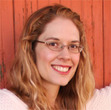Beth Cato's Blog, page 145
June 7, 2013
Five Questions for Rhonda Parrish, Editor of Metastasis
I've invited Rhonda to my blog a few times before. She's the editor of Niteblade Magazine and author of Aphanasian Stories, among many other works. However, today she's here to talk about the new anthology she's putting together called Metastasis, published by Wolfsinger Publications. It's a fantasy and science fiction anthology on the theme of cancer. You can read the detailed guidelines here, and the deadline for all submissions is June 30th, 2013.
1) There's no getting around the fact that this is personal. You very quickly lost your mom to cancer. Do you find it necessary to set aside submissions at times because of the pain that comes across--and is that catharsis also part of the appeal when you select a story?
This is super personal for me. I'd had the idea for this anthology kicking around in my head for quite a while before my Mom was diagnosed but I'd been putting off pursuing it for all sorts of (silly) reasons. When my Mom was diagnosed and died so quickly after it really put things in perspective for me and was the kick in the butt I needed to stop procrastinating and get started.
So far I haven't had to set aside any submissions because they were too painful but I have been pretty careful to read them in small batches to sort of shield myself a little bit. That being said, I would also welcome the catharsis that would come from reading a submission that pierced my heart.
2) Are there any angles you're seeing too much of already?
The biggest thing I'm seeing too much of already are stories which aren't speculative in nature. Everyone, it seems, has been touched by cancer in some ways and we all have a story to tell. Unfortunately, any of the stories which do not fall under the speculative umbrella are not appropriate for this anthology.
3) What would you really like to see but haven't yet?
I would like to see more submissions about cancer which don't deal directly with humans. As you know far too well, Beth, cancer doesn't just afflict people, and if we take that idea out of the realm of the 'real world' and into that of imagination the possibilities are vast. I'd also like to see some more submissions which deal with cancer in a more allegorical or metaphorical way.
4) Can you tell a little bit about the basic guidelines for fiction and poetry, and how you want to see submissions?
I'm looking for stories up to about 7,500 words long and poems up to 40 lines long. Those aren't hard limits but because of the limitations of space within the anthology anything longer is going to be a pretty tough sell. Standard formatting is fine and I'm accepting multiple submissions but please, only send me your best work.
Submissions get sent to my publisher and then she passes them on to me. Because of that you may not receive a confirmation of receipt but I am doing my best to reply to submissions in a timely manner. Because of the profoundly personal nature of a great many of the submissions I'm receiving I am not using any form letters, which slows response time slightly but feels like the right thing to do.
5) With such dark subject matter, what do you want readers to take away from this in the end?
Cancer terrifies me. On a personal level I think editing this anthology is a step on the path of me working through that fear and I think it would be amazing if I could bring other likeminded people on that trail with me. In a perfect world readers would feel less afraid after reading this anthology, but in the absence of a perfect world, I'll settle for hope. I want readers to finish this book and feel hope. Hope that as frightening and powerful as cancer is, it can be vanquished. It will be. Someday.
Thank you, Rhonda! I really admire you for your courage to delve into such an emotional subject.
1) There's no getting around the fact that this is personal. You very quickly lost your mom to cancer. Do you find it necessary to set aside submissions at times because of the pain that comes across--and is that catharsis also part of the appeal when you select a story?
This is super personal for me. I'd had the idea for this anthology kicking around in my head for quite a while before my Mom was diagnosed but I'd been putting off pursuing it for all sorts of (silly) reasons. When my Mom was diagnosed and died so quickly after it really put things in perspective for me and was the kick in the butt I needed to stop procrastinating and get started.
So far I haven't had to set aside any submissions because they were too painful but I have been pretty careful to read them in small batches to sort of shield myself a little bit. That being said, I would also welcome the catharsis that would come from reading a submission that pierced my heart.
2) Are there any angles you're seeing too much of already?
The biggest thing I'm seeing too much of already are stories which aren't speculative in nature. Everyone, it seems, has been touched by cancer in some ways and we all have a story to tell. Unfortunately, any of the stories which do not fall under the speculative umbrella are not appropriate for this anthology.
3) What would you really like to see but haven't yet?
I would like to see more submissions about cancer which don't deal directly with humans. As you know far too well, Beth, cancer doesn't just afflict people, and if we take that idea out of the realm of the 'real world' and into that of imagination the possibilities are vast. I'd also like to see some more submissions which deal with cancer in a more allegorical or metaphorical way.
4) Can you tell a little bit about the basic guidelines for fiction and poetry, and how you want to see submissions?
I'm looking for stories up to about 7,500 words long and poems up to 40 lines long. Those aren't hard limits but because of the limitations of space within the anthology anything longer is going to be a pretty tough sell. Standard formatting is fine and I'm accepting multiple submissions but please, only send me your best work.
Submissions get sent to my publisher and then she passes them on to me. Because of that you may not receive a confirmation of receipt but I am doing my best to reply to submissions in a timely manner. Because of the profoundly personal nature of a great many of the submissions I'm receiving I am not using any form letters, which slows response time slightly but feels like the right thing to do.
5) With such dark subject matter, what do you want readers to take away from this in the end?
Cancer terrifies me. On a personal level I think editing this anthology is a step on the path of me working through that fear and I think it would be amazing if I could bring other likeminded people on that trail with me. In a perfect world readers would feel less afraid after reading this anthology, but in the absence of a perfect world, I'll settle for hope. I want readers to finish this book and feel hope. Hope that as frightening and powerful as cancer is, it can be vanquished. It will be. Someday.
Thank you, Rhonda! I really admire you for your courage to delve into such an emotional subject.
Published on June 07, 2013 06:00
June 5, 2013
Bready or Not: Garlic Bread Pizza Dough
Last year, I approached the folks at Relish Magazine for help. They were holding weekly Q & A sessions with a chef, and one week I asked: "I'm traveling to see family and I want to prepare garlic bread and bring all of my dry ingredients with me. Will the yeast be okay if it's kept in a hot car? And do you have any recipes to recommend?"
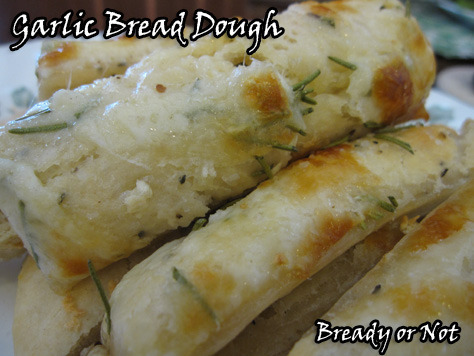
Relish's chef told me that when they do their traveling cooking shows, they will mix in the yeast with dry ingredients and it travels without any issues. He also sent me a list of links to different dough recipes. I saw this one and thought, "That's it."
Really, this is the epitome of, "ZOMG garlic bread." Because let's be honest, cheesy garlic bread is one of the best creations of humanity. Ever. The wheel? Nice. Space travel? Super! Cheese and butter puddled atop soft-yet-chewy baked bread? Nirvana achievement: UNLOCKED.
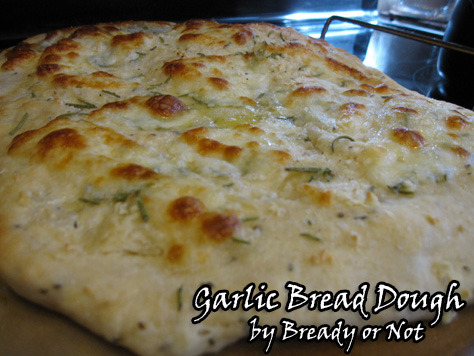
The same dough is fabulous for pizzas, calzones, savory monkey bread, and so on. It rises fast and you can customize with whatever herbs or cheese you desire. Oh yeah, and if there's leftover dough? Wrap it in parchment paper, tuck it in a freezer bag, and freeze it. Thaw it in the fridge when you need it.
Garlic dough that multitasks FTW.
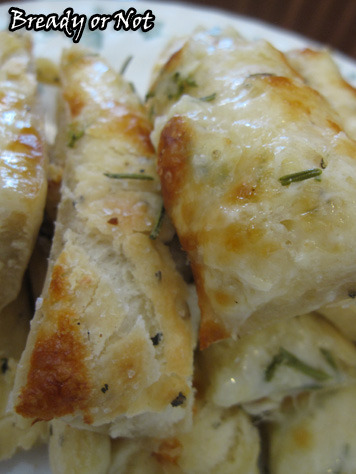
Garlic Bread Pizza Dough
tweaked from the original on Relish Magazine
Ingredients for bread:
1 1/8 cups warm water (100-105 degrees)
3 teaspoons dry yeast
1 1/2 teaspoons honey
1 1/2 Tablespoons olive oil
2 1/2 cups all-purpose flour, plus more flour (up to 1/2 cup), if needed
1 teaspoon salt
1 teaspoon garlic powder
1 teaspoon dried basil
more herbs to preference
4 Tablespoons unsalted butter
2 garlic cloves, pressed or very finely minced
sprinkling of kosher salt or freshly-ground salt
herbs to preference
any cheese you desire, shredded or sliced
Instructions
Note: This can be made in a bread machine using the dough setting. Add the ingredients in the recommended order.
1) If you're using RAPID yeast: in a large bowl, combine water, yeast, honey and olive oil. Mix with a spoon, then let sit until foamy, about 10 minutes. Add in 2 1/2 cups flour, salt, garlic powder and dried basil, stirring with a spoon until the dough comes together but it still sticky.
[If you are using INSTANT yeast, which is what I recommend, add the yeast in the with dry ingredients and mix in the wet. No need to wait.]
2) Using your hands or a machine with a dough hook, form the dough into a ball and work the additional 1/2 cup flour if it's needed. Knead for several minutes until everything is incorporated and the dough is smooth. Rub the same bowl with olive oil then place the dough inside, turning to coat. Cover with a towel or plastic wrap and place in a warm place to rise for about 1 1/2 hours.
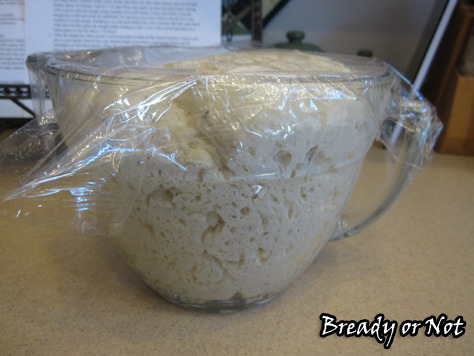
3) After the dough has risen, punch it down and place it on a buttered or olive oil-sprayed cookie sheet or stone. Using a rolling pin or your hands, form the into your desired shape on the sheet.
If you're making garlic bread:
4) Preheat the oven to 400-degrees. Place the towel back over the dough and let sit in the warm place for 10 minutes to rest. Melt the butter and mix it with the garlic, salt, and herbs of your choice. Using a spoon or pastry brush, slather the whole surface with the butter mixture.
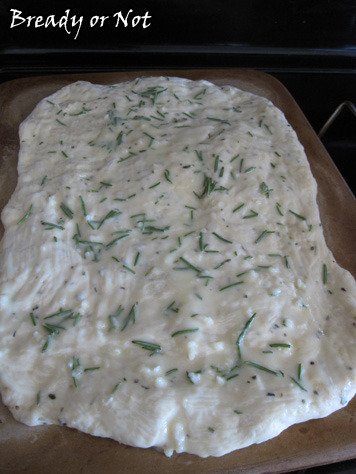
5) Place it in the oven for 7-9 minutes, just until the top turns firm and the slightest golden. Add your cheese and bake for another few minutes until it's melted and bubbly. Slice it with a pizza cutter and serve!
OM NOM NOM.
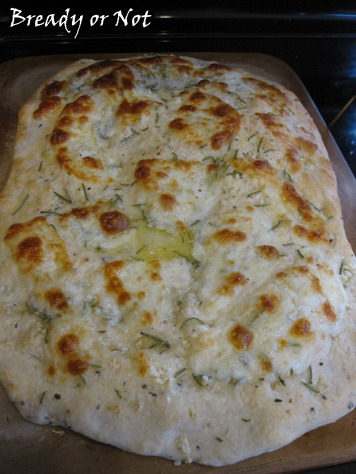

Relish's chef told me that when they do their traveling cooking shows, they will mix in the yeast with dry ingredients and it travels without any issues. He also sent me a list of links to different dough recipes. I saw this one and thought, "That's it."
Really, this is the epitome of, "ZOMG garlic bread." Because let's be honest, cheesy garlic bread is one of the best creations of humanity. Ever. The wheel? Nice. Space travel? Super! Cheese and butter puddled atop soft-yet-chewy baked bread? Nirvana achievement: UNLOCKED.

The same dough is fabulous for pizzas, calzones, savory monkey bread, and so on. It rises fast and you can customize with whatever herbs or cheese you desire. Oh yeah, and if there's leftover dough? Wrap it in parchment paper, tuck it in a freezer bag, and freeze it. Thaw it in the fridge when you need it.
Garlic dough that multitasks FTW.

Garlic Bread Pizza Dough
tweaked from the original on Relish Magazine
Ingredients for bread:
1 1/8 cups warm water (100-105 degrees)
3 teaspoons dry yeast
1 1/2 teaspoons honey
1 1/2 Tablespoons olive oil
2 1/2 cups all-purpose flour, plus more flour (up to 1/2 cup), if needed
1 teaspoon salt
1 teaspoon garlic powder
1 teaspoon dried basil
more herbs to preference
4 Tablespoons unsalted butter
2 garlic cloves, pressed or very finely minced
sprinkling of kosher salt or freshly-ground salt
herbs to preference
any cheese you desire, shredded or sliced
Instructions
Note: This can be made in a bread machine using the dough setting. Add the ingredients in the recommended order.
1) If you're using RAPID yeast: in a large bowl, combine water, yeast, honey and olive oil. Mix with a spoon, then let sit until foamy, about 10 minutes. Add in 2 1/2 cups flour, salt, garlic powder and dried basil, stirring with a spoon until the dough comes together but it still sticky.
[If you are using INSTANT yeast, which is what I recommend, add the yeast in the with dry ingredients and mix in the wet. No need to wait.]
2) Using your hands or a machine with a dough hook, form the dough into a ball and work the additional 1/2 cup flour if it's needed. Knead for several minutes until everything is incorporated and the dough is smooth. Rub the same bowl with olive oil then place the dough inside, turning to coat. Cover with a towel or plastic wrap and place in a warm place to rise for about 1 1/2 hours.

3) After the dough has risen, punch it down and place it on a buttered or olive oil-sprayed cookie sheet or stone. Using a rolling pin or your hands, form the into your desired shape on the sheet.
If you're making garlic bread:
4) Preheat the oven to 400-degrees. Place the towel back over the dough and let sit in the warm place for 10 minutes to rest. Melt the butter and mix it with the garlic, salt, and herbs of your choice. Using a spoon or pastry brush, slather the whole surface with the butter mixture.

5) Place it in the oven for 7-9 minutes, just until the top turns firm and the slightest golden. Add your cheese and bake for another few minutes until it's melted and bubbly. Slice it with a pizza cutter and serve!
OM NOM NOM.

Published on June 05, 2013 06:00
June 2, 2013
Sunday Quote is off on an adventure!
"I figure if a girl wants to be a legend, she should go ahead and be one." ~Calamity Jane
Published on June 02, 2013 06:00
May 31, 2013
Chicken Soup for the Soul: Inspiration for Writers
The publishing process grinds away at a writer's soul. You submit, you wait, you get rejected time and again. It's hard to deal with the constant onslaught of negativity with short stories, but the agent querying process is a special sort of hell. Novels are hard work, and rejections are that much more piercing. Even if logic tells you, "It's not personal," it feels personal.
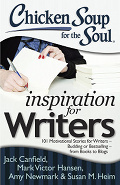
I endured query hell and I found my agent through the slush pile--the snail mail slush, no less. I now tell the story of my neurotic hunt for an agent in a new Chicken Soup book that's all about Inspiration for Writers. "Queries, Agents, and Insomnia" is the second story in the book, and the Amazon preview lets you read the first few pages.
I hope it grants writers a little bit of hope as they slog along on their publishing journey. We can use all the help we can get.

I endured query hell and I found my agent through the slush pile--the snail mail slush, no less. I now tell the story of my neurotic hunt for an agent in a new Chicken Soup book that's all about Inspiration for Writers. "Queries, Agents, and Insomnia" is the second story in the book, and the Amazon preview lets you read the first few pages.
I hope it grants writers a little bit of hope as they slog along on their publishing journey. We can use all the help we can get.
Published on May 31, 2013 06:00
May 29, 2013
Bready or Not: No Bake Biscoff Cookies
It's summer. The calendar doesn't have to say it, but here near Phoenix, we know. My air conditioner started to crank on in March. By June... well, this place is called the Valley of the Sun for a reason.
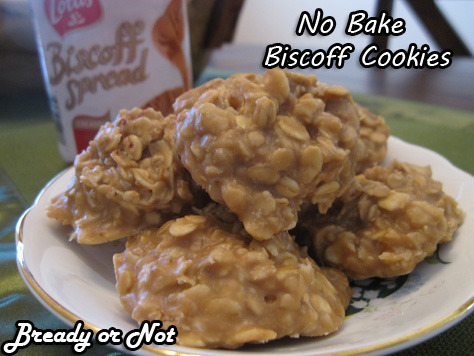
No-bake recipes are a godsend. Make something tasty without heating up the house, or spending hours in the kitchen. Plus, some of the stuff (like these cookies) can be kept at room temp or chilled in the fridge, making you feel all the cooler.
Feeling cooler is a good thing because these cookies, um, won't make you feel svelte.
There's also flavor.
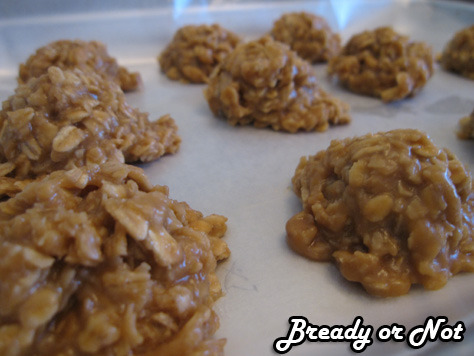
As you might guess by the whole Biscoff theme this month, I love the taste of cookie dough. Sometimes I prefer the dough over the baked result. These cookies are magic for several reasons:
- they scream Biscoff flavor
- you throw it together in a big pot on the stove
- the cookies set within minutes
- they taste like pure sugary-cookie dough crack
- did I mention they taste good?
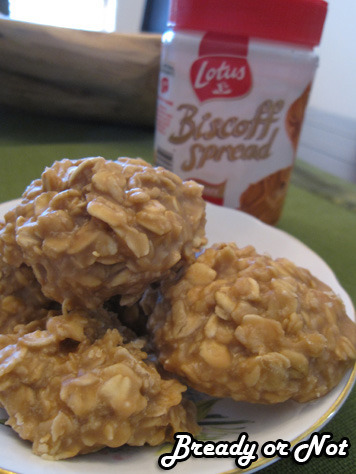
The end texture of these is nifty, too. The quick oats meld with the hot syrupy ooze, and as it cools they all crystallize together. They actually melt on your tongue.
Oh, come on. You know you want some.
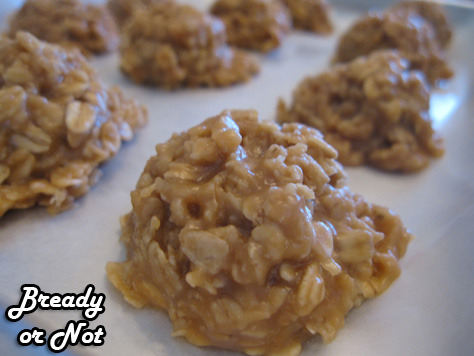
No-Bake Biscoff Cookies
recipe from Sugarcrafter
Using a tablespoon scoop, yields about 35 cookies.
Ingredients:
1 1/2 cups granulated sugar
1/2 cup whole milk
1/2 cup unsalted butter (1 cube)
Pinch of salt
3/4 cup Biscoff spread (use Pam on the measuring cup for easy release)
2 tsp vanilla extract
3 cups quick-cooking oats
In a large pot, add the sugar, milk, butter and salt. Bring to a rolling boil and let boil, without stirring, for one full minute. Keep an eye on it, because it will froth and rise in the pan. Immediately remove from heat.
Stir in the Biscoff spread and vanilla until smooth, then fold in the oats. Use a tablespoon cookie scoop or spoon to drop cookies onto wax paper-lined baking sheets; they will only spread a little bit. Will set within minutes.
OM NOM NOM.
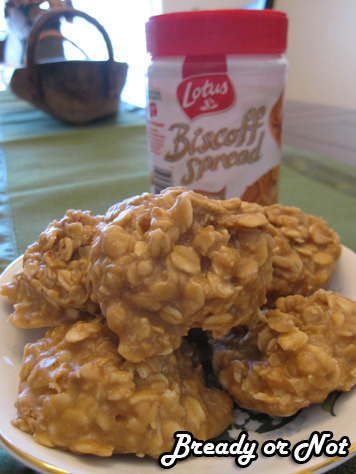

No-bake recipes are a godsend. Make something tasty without heating up the house, or spending hours in the kitchen. Plus, some of the stuff (like these cookies) can be kept at room temp or chilled in the fridge, making you feel all the cooler.
Feeling cooler is a good thing because these cookies, um, won't make you feel svelte.
There's also flavor.

As you might guess by the whole Biscoff theme this month, I love the taste of cookie dough. Sometimes I prefer the dough over the baked result. These cookies are magic for several reasons:
- they scream Biscoff flavor
- you throw it together in a big pot on the stove
- the cookies set within minutes
- they taste like pure sugary-cookie dough crack
- did I mention they taste good?

The end texture of these is nifty, too. The quick oats meld with the hot syrupy ooze, and as it cools they all crystallize together. They actually melt on your tongue.
Oh, come on. You know you want some.

No-Bake Biscoff Cookies
recipe from Sugarcrafter
Using a tablespoon scoop, yields about 35 cookies.
Ingredients:
1 1/2 cups granulated sugar
1/2 cup whole milk
1/2 cup unsalted butter (1 cube)
Pinch of salt
3/4 cup Biscoff spread (use Pam on the measuring cup for easy release)
2 tsp vanilla extract
3 cups quick-cooking oats
In a large pot, add the sugar, milk, butter and salt. Bring to a rolling boil and let boil, without stirring, for one full minute. Keep an eye on it, because it will froth and rise in the pan. Immediately remove from heat.
Stir in the Biscoff spread and vanilla until smooth, then fold in the oats. Use a tablespoon cookie scoop or spoon to drop cookies onto wax paper-lined baking sheets; they will only spread a little bit. Will set within minutes.
OM NOM NOM.

Published on May 29, 2013 06:00
May 27, 2013
Five Questions for Merrie Haskell
Today I'm talking with Merrie Haskell, author of Handbook for Dragon Slayers, which comes out tomorrow from HarperCollins. Here's a little bit about Merrie:
Merrie Haskell grew up half in North Carolina, half in Michigan. She wrote her first story at age seven, and she walked dogs after school to save for her first typewriter. She attended the University of Michigan, where she graduated from the Residential College with a degree in biological anthropology. She works in a library with over 7.5 million volumes.
Her first book, the Middle Grade historical fantasy The Princess Curse, was a Junior Library Guild selection. Her second book is Handbook for Dragon Slayers. Her short fiction appears in Nature, Asimov’s, and various anthologies. Merrie lives in Saline, Michigan.
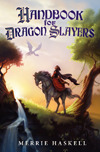
1) This is your second book. The Princess Curse came out a year ago, and your new release Handbook for Dragon Slayers is set in the same world, 400 years earlier. In what ways are the books connected?
I call these the Apprentice Books, in my head (not an official name!). The Princess Curse was called The Herbalist's Apprentice while I was writing it and trying to sell it. I always coded Handbook for Dragon Slayers as something like The Apprentice Princess in my head, since the main character (while she wants to be a writer, and her companions want to slay dragons) is actually learning how to be a ruler. Likewise, the third, which (today) is called The Castle Behind Thorns, features a boy who wants to be a blacksmith's apprentice. There are more Apprentice Books in my head; we'll see when they want to be written.
While these books aren't sequels, they are linked by more than sort of the statuses and career ambitions of their protagonists. They all share the same alternate past/"secret history" of the world. They have a common mythology; the Underworld is the same in all the books, though it is most prominent in The Princess Curse. The Underworld marches with the World Above in tandem; if the Underworld is sick one place, the lands above it are sick too. So, the Apprentice history includes an Underworld invasion parallel to the Above World Mongol invasion of Europe, in which the invaders broke up the Underworld kingdom of Hades into numerous smaller states. Hekate is a sort of unseen antagonist in The Princess Curse, having taken over one of those smaller states; she is more developed (or at least, she's on-stage!) in Handbook for Dragon Slayers--only it's 400 years earlier, and she's leading a Wild Hunt, being a servant of the Underworld at that point, not a ruler of it.
So, really? Most of it's in my head, but there are some links on the page. There is one good Easter egg in Handbook that directly references The Princess Curse. I won't spoil it.
2) I know you don't always write for kids; we even have stories together in Uncle John's Bathroom Reader Presents Flush Fiction. Do you have a favorite short story?
Picking a favorite is hard! I would say that my current favorite is "Zebulon Vance Sings the Alphabet Songs of Love," in Apex Magazine. So many of my short stories have felt experimental, like, "here we go on a small adventure in voice!" (or structure, or whatever), that I don't feel like I really get to live in them the way I do in my books. But I feel lived in this story a bit. I have a friend who judges my works by whether or not they have enough of what he calls my "cockeyed optimism" in them. I believe this one has enough.
3) What attracted you to write for a middle grade audience?
This makes it sound like it was my idea! If you can even believe this, I wrote The Princess Curse thinking it was going to be lucky to sneak into the YA market, what with my main character marrying a dragon-demon in his fifties. Taking it down to MG was all my agent's brilliant marketing idea. So, basically, I wrote what I wrote and let the marketing sort itself out.
4) I have to say, you have been blessed with absolutely gorgeous covers. Do you have the artwork showcased around your house in some way?
Not as such. I wanted to frame dustjackets, but never quite figured out how to do it. I do have the poster from my launch event framed, which has some of Reveka's face on it. And my own face. So that feels awkward.
5) If someone wants to write for middle grade, what one piece of advice would you give them?
You know the theory about "writing to your one, perfect reader" and not worrying about trying to please the rest of the world? My perfect reader (for pretty much everything I write) is me when I was thirteen. It's not too big of a leap to write to the me I was when I was eleven. I wonder about folks who don't have a particular love of either MG literature or MG-aged children or who don't remember being that age with the appropriate level of cynicism, who suddenly want to write for the age range. I worry that they'll stink up my genre with dumbed down or didactic or smarmy books. There are adults who ask me questions about my writing choices that I think make it clear that they neither remember being a child nor have spoken to any 10-year-old since they were one themselves, and they always want to ask what I was thinking, putting in difficult words or difficult situations or difficult choices or difficult emotions--if they've read the book--or else they make assumptions that I haven't done any of that. I never put in any hard words for the sake of having long words. I never took any hard words out for the sake of my readers' supposed lack of comprehension. Likewise, everything else--choices, situations, emotions.
In short: if you're going to write for MG, don't talk down to your readers.
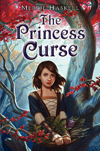
Thanks so much, Merrie!
If you want to buy Handbook for Dragon Slayers (or her other book, The Princess Curse) they are available at Amazon, Barnes & Noble, and most every other bookseller.
Merrie Haskell grew up half in North Carolina, half in Michigan. She wrote her first story at age seven, and she walked dogs after school to save for her first typewriter. She attended the University of Michigan, where she graduated from the Residential College with a degree in biological anthropology. She works in a library with over 7.5 million volumes.
Her first book, the Middle Grade historical fantasy The Princess Curse, was a Junior Library Guild selection. Her second book is Handbook for Dragon Slayers. Her short fiction appears in Nature, Asimov’s, and various anthologies. Merrie lives in Saline, Michigan.

1) This is your second book. The Princess Curse came out a year ago, and your new release Handbook for Dragon Slayers is set in the same world, 400 years earlier. In what ways are the books connected?
I call these the Apprentice Books, in my head (not an official name!). The Princess Curse was called The Herbalist's Apprentice while I was writing it and trying to sell it. I always coded Handbook for Dragon Slayers as something like The Apprentice Princess in my head, since the main character (while she wants to be a writer, and her companions want to slay dragons) is actually learning how to be a ruler. Likewise, the third, which (today) is called The Castle Behind Thorns, features a boy who wants to be a blacksmith's apprentice. There are more Apprentice Books in my head; we'll see when they want to be written.
While these books aren't sequels, they are linked by more than sort of the statuses and career ambitions of their protagonists. They all share the same alternate past/"secret history" of the world. They have a common mythology; the Underworld is the same in all the books, though it is most prominent in The Princess Curse. The Underworld marches with the World Above in tandem; if the Underworld is sick one place, the lands above it are sick too. So, the Apprentice history includes an Underworld invasion parallel to the Above World Mongol invasion of Europe, in which the invaders broke up the Underworld kingdom of Hades into numerous smaller states. Hekate is a sort of unseen antagonist in The Princess Curse, having taken over one of those smaller states; she is more developed (or at least, she's on-stage!) in Handbook for Dragon Slayers--only it's 400 years earlier, and she's leading a Wild Hunt, being a servant of the Underworld at that point, not a ruler of it.
So, really? Most of it's in my head, but there are some links on the page. There is one good Easter egg in Handbook that directly references The Princess Curse. I won't spoil it.
2) I know you don't always write for kids; we even have stories together in Uncle John's Bathroom Reader Presents Flush Fiction. Do you have a favorite short story?
Picking a favorite is hard! I would say that my current favorite is "Zebulon Vance Sings the Alphabet Songs of Love," in Apex Magazine. So many of my short stories have felt experimental, like, "here we go on a small adventure in voice!" (or structure, or whatever), that I don't feel like I really get to live in them the way I do in my books. But I feel lived in this story a bit. I have a friend who judges my works by whether or not they have enough of what he calls my "cockeyed optimism" in them. I believe this one has enough.
3) What attracted you to write for a middle grade audience?
This makes it sound like it was my idea! If you can even believe this, I wrote The Princess Curse thinking it was going to be lucky to sneak into the YA market, what with my main character marrying a dragon-demon in his fifties. Taking it down to MG was all my agent's brilliant marketing idea. So, basically, I wrote what I wrote and let the marketing sort itself out.
4) I have to say, you have been blessed with absolutely gorgeous covers. Do you have the artwork showcased around your house in some way?
Not as such. I wanted to frame dustjackets, but never quite figured out how to do it. I do have the poster from my launch event framed, which has some of Reveka's face on it. And my own face. So that feels awkward.
5) If someone wants to write for middle grade, what one piece of advice would you give them?
You know the theory about "writing to your one, perfect reader" and not worrying about trying to please the rest of the world? My perfect reader (for pretty much everything I write) is me when I was thirteen. It's not too big of a leap to write to the me I was when I was eleven. I wonder about folks who don't have a particular love of either MG literature or MG-aged children or who don't remember being that age with the appropriate level of cynicism, who suddenly want to write for the age range. I worry that they'll stink up my genre with dumbed down or didactic or smarmy books. There are adults who ask me questions about my writing choices that I think make it clear that they neither remember being a child nor have spoken to any 10-year-old since they were one themselves, and they always want to ask what I was thinking, putting in difficult words or difficult situations or difficult choices or difficult emotions--if they've read the book--or else they make assumptions that I haven't done any of that. I never put in any hard words for the sake of having long words. I never took any hard words out for the sake of my readers' supposed lack of comprehension. Likewise, everything else--choices, situations, emotions.
In short: if you're going to write for MG, don't talk down to your readers.

Thanks so much, Merrie!
If you want to buy Handbook for Dragon Slayers (or her other book, The Princess Curse) they are available at Amazon, Barnes & Noble, and most every other bookseller.
Published on May 27, 2013 06:00
May 26, 2013
Sunday Quote has her share of hate
"If someone asks me, “Why do you write?” I can reply by pointing out that it is a very dumb question. Nevertheless, there is an answer. I write because I hate. A lot. Hard." ~William Gass, 1976
Published on May 26, 2013 06:00
May 24, 2013
Phoenix Comicon 2013
Saturday I'll be attending Phoenix Comicon and doing the whole fangirl thing. I'll be wearing a Rambo Brite shirt (yes, that's Rainbow Brite crossed with Rambo), either a slime hat or a Jayne hat depending on my mood, and trolling around author and steampunk panels and possibly melting into a pile of goo when I meet my teenage crush
Events like this are always taxing for me, as a super-introvert, but I'm still really excited. The line-up of guests is great this year, and I'm at a point where I'm going to start piecing together two steampunk costumes; I hope to make some local connections to help me with that.
Next year I hope to be at the point where I actually participate on some panels. We shall see!
Events like this are always taxing for me, as a super-introvert, but I'm still really excited. The line-up of guests is great this year, and I'm at a point where I'm going to start piecing together two steampunk costumes; I hope to make some local connections to help me with that.
Next year I hope to be at the point where I actually participate on some panels. We shall see!
Published on May 24, 2013 06:00
May 23, 2013
Science of Hockey
SCIENCE!
I have a guest blog up at the Arizona SciTech Festival about the Science of Hockey event we attended this past March.
It's rather nifty how this whole guest post came about. See, I have a weird thing for surveys. I do them quite often after going to restaurants or shops. I did a survey about the Science of Hockey, and lo and behold, I was recently contacted with the news I'd won a laptop in their random drawing! It's a brand new touch-screen Netbook from the Microsoft Store. Along with that, I was invited to write about my experience at the event.
The Arizona SciTech Festival really does good work. It's not just a single festival. They promote science-related gatherings all across Arizona, and it's stuff that kids and adults can enjoy. If you're in the state, check it out!
I have a guest blog up at the Arizona SciTech Festival about the Science of Hockey event we attended this past March.
It's rather nifty how this whole guest post came about. See, I have a weird thing for surveys. I do them quite often after going to restaurants or shops. I did a survey about the Science of Hockey, and lo and behold, I was recently contacted with the news I'd won a laptop in their random drawing! It's a brand new touch-screen Netbook from the Microsoft Store. Along with that, I was invited to write about my experience at the event.
The Arizona SciTech Festival really does good work. It's not just a single festival. They promote science-related gatherings all across Arizona, and it's stuff that kids and adults can enjoy. If you're in the state, check it out!
Published on May 23, 2013 06:00
May 22, 2013
Bready or Not: Homemade Biscoff Cookies
This whole month has been about ways to use Biscoff spread, that magical cookie butter in a jar. However, the source of that magic is the Biscoff cookie. It's a basic shortbread cookie that is most famous for being available on airplane flights. I actually didn't try a Biscoff cookie until recently--Wal-mart sells them now! It's a very mild spice-shortbread cookie. Now, if I'm going to eat store-bought shortbread, I think I prefer the buttery style, like Walker's, but this Biscoff stuff isn't bad.
And you know what? Being a home baker, I can make it better.
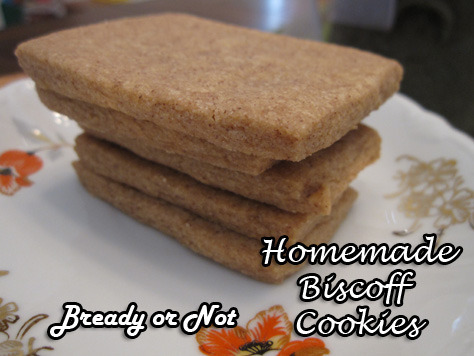
"Gentlebakers, we can rebuild this cookie. We have the technology..."
I love good shortbread. So does my husband. The very first day I met him, I made him shortbread, and I think that kinda sealed the deal. Speaking of my husband, our 13th wedding anniversary is tomorrow. That shortbread was worth it, I think.
This recipe probably would have won him over, too--he loved it, and mightily praised how well it worked with coffee. His co-workers scarfed it up, and one was surprised at how it tasted like snickerdoodles, though it looks nothing like a snickerdoodle. Nope, this is a brown sugar and cinnamon shortbread. I think the heaping amount of cinnamon here is what makes these superior to the store-bought Biscoff; those might be just too mild.
The texture of these is ideal, too. They are crispy enough to stay intact for travel, but tender and chewy to bite.
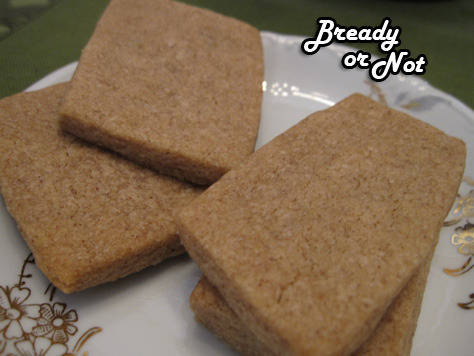
One extra note here. I live in Arizona. It's dry. This means that when I chill roll-out dough, I almost always have to add water or it becomes a crumbly mess when I try to roll it out. That happened with this recipe, too. If the dough is too wet, add flour; if it's dry, add water by the tablespoon until it's a good texture. I don't find it necessary to chill it again after. You can cut the cookies into shapes or do the lazy thing like me and use a pizza cutter.
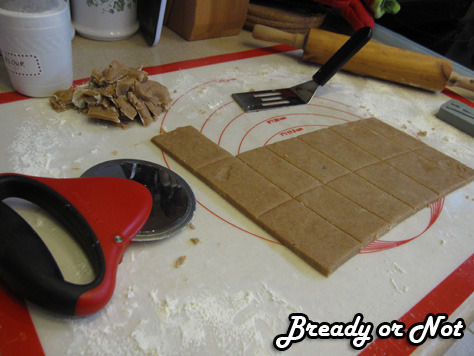
Homemade Biscoff Cookies
modified slightly from Blue Bonnets and Brownies
Ingredients
2 cups all-purpose flour
1 Tablespoon cinnamon
1/4 teaspoon ground nutmeg
1/2 teaspoon kosher salt
1/2 teaspoon baking soda
1 cup (2 sticks) unsalted butter, softened
1/2 cup granulated sugar
1/4 cup firmly packed brown sugar
1 teaspoon pure vanilla extract
Directions
In a medium bowl add the flour, cinnamon, nutmeg, salt, and baking soda together. Whisk together thoroughly to combine. Set aside.
In a large bowl or the bowl of a stand mixer, cream the butter together with the sugar and brown sugar until light and fluffy. Add the vanilla extract and mix again.
With the mixer on slow, add the flour mixture a little bit at a time until the dough is fully combined. Make sure to scrape the sides of the bowl often.
Refrigerate the dough for at least half an hour. When ready to cook, preheat the oven to 350F.
Lightly flour a large surface and roll out the dough to 1/4″ thick as best you can. *Note that if you're in a dry climate, you may need to add water to make the dough cohesive; if it's too wet, add flour. Using a cookie cutter or pizza slicer, cut as many cookies as you can out of the rolled-out dough.
Combine the leftover dough into a ball again, and roll out again. Only do this once, as reworking the dough too many times will result in tough cookies.
Bake cookies for roughly 9-10 minutes. Watch the oven very closely after the 7 minute mark. Because of the thinness and high sugar content, the cookies are a lot like caramel and can go from perfect to burnt in a flash. It can also be hard to see if they are browning because they are already brown.
Eat as a snack, as a breakfast with coffee, with ice cream, dipped in milk... the possibilities are endless.
OM NOM NOM.
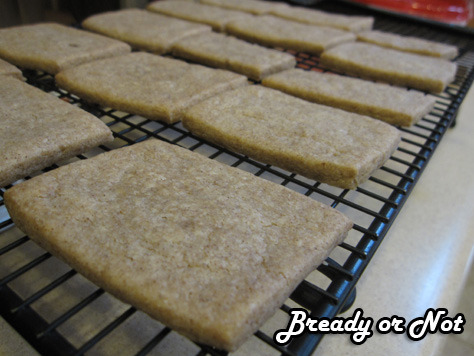
And you know what? Being a home baker, I can make it better.

"Gentlebakers, we can rebuild this cookie. We have the technology..."
I love good shortbread. So does my husband. The very first day I met him, I made him shortbread, and I think that kinda sealed the deal. Speaking of my husband, our 13th wedding anniversary is tomorrow. That shortbread was worth it, I think.
This recipe probably would have won him over, too--he loved it, and mightily praised how well it worked with coffee. His co-workers scarfed it up, and one was surprised at how it tasted like snickerdoodles, though it looks nothing like a snickerdoodle. Nope, this is a brown sugar and cinnamon shortbread. I think the heaping amount of cinnamon here is what makes these superior to the store-bought Biscoff; those might be just too mild.
The texture of these is ideal, too. They are crispy enough to stay intact for travel, but tender and chewy to bite.

One extra note here. I live in Arizona. It's dry. This means that when I chill roll-out dough, I almost always have to add water or it becomes a crumbly mess when I try to roll it out. That happened with this recipe, too. If the dough is too wet, add flour; if it's dry, add water by the tablespoon until it's a good texture. I don't find it necessary to chill it again after. You can cut the cookies into shapes or do the lazy thing like me and use a pizza cutter.

Homemade Biscoff Cookies
modified slightly from Blue Bonnets and Brownies
Ingredients
2 cups all-purpose flour
1 Tablespoon cinnamon
1/4 teaspoon ground nutmeg
1/2 teaspoon kosher salt
1/2 teaspoon baking soda
1 cup (2 sticks) unsalted butter, softened
1/2 cup granulated sugar
1/4 cup firmly packed brown sugar
1 teaspoon pure vanilla extract
Directions
In a medium bowl add the flour, cinnamon, nutmeg, salt, and baking soda together. Whisk together thoroughly to combine. Set aside.
In a large bowl or the bowl of a stand mixer, cream the butter together with the sugar and brown sugar until light and fluffy. Add the vanilla extract and mix again.
With the mixer on slow, add the flour mixture a little bit at a time until the dough is fully combined. Make sure to scrape the sides of the bowl often.
Refrigerate the dough for at least half an hour. When ready to cook, preheat the oven to 350F.
Lightly flour a large surface and roll out the dough to 1/4″ thick as best you can. *Note that if you're in a dry climate, you may need to add water to make the dough cohesive; if it's too wet, add flour. Using a cookie cutter or pizza slicer, cut as many cookies as you can out of the rolled-out dough.
Combine the leftover dough into a ball again, and roll out again. Only do this once, as reworking the dough too many times will result in tough cookies.
Bake cookies for roughly 9-10 minutes. Watch the oven very closely after the 7 minute mark. Because of the thinness and high sugar content, the cookies are a lot like caramel and can go from perfect to burnt in a flash. It can also be hard to see if they are browning because they are already brown.
Eat as a snack, as a breakfast with coffee, with ice cream, dipped in milk... the possibilities are endless.
OM NOM NOM.

Published on May 22, 2013 06:00

